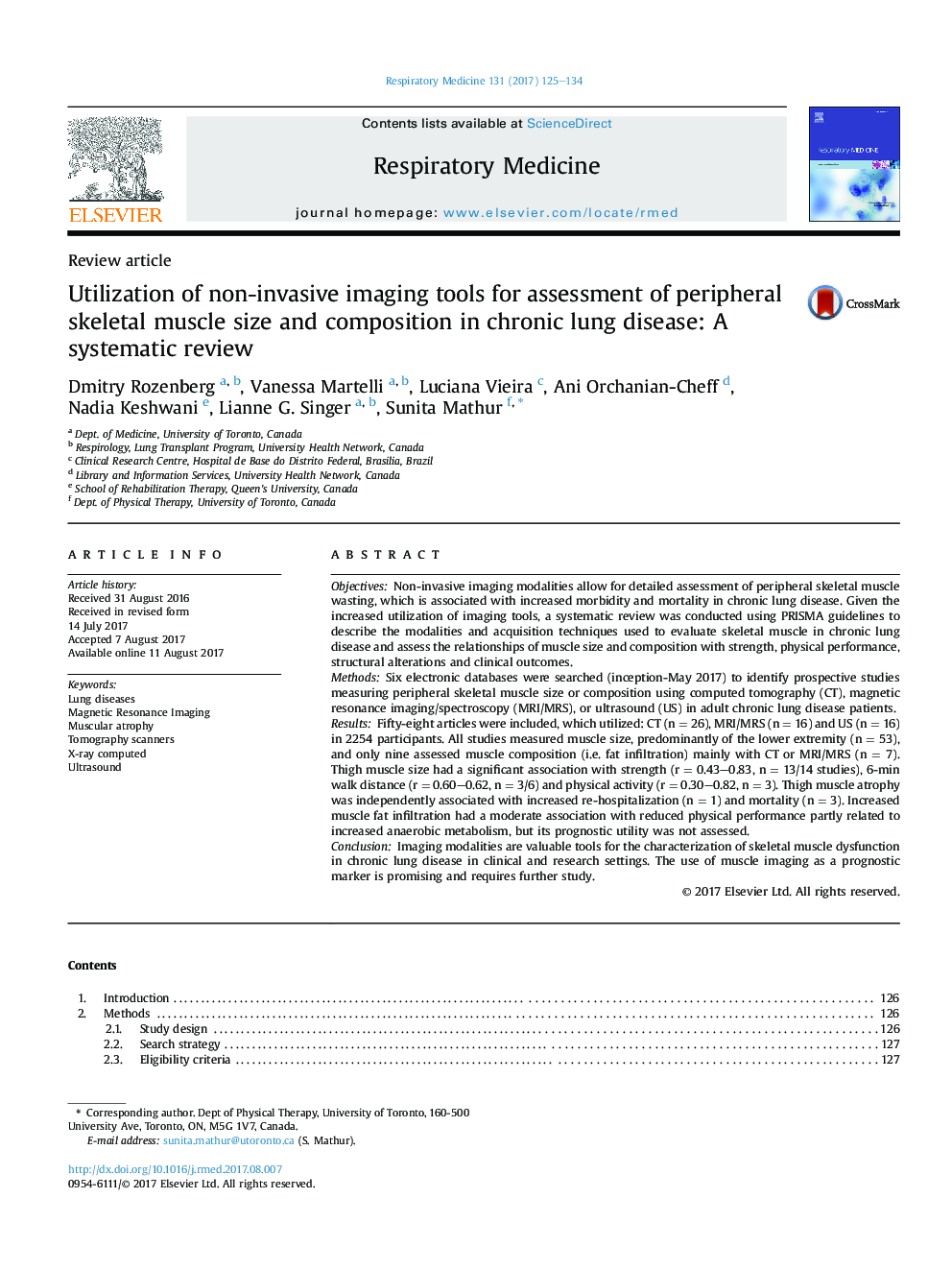| کد مقاله | کد نشریه | سال انتشار | مقاله انگلیسی | نسخه تمام متن |
|---|---|---|---|---|
| 5724945 | 1609435 | 2017 | 10 صفحه PDF | دانلود رایگان |
- Skeletal muscle dysfunction is prevalent in chronic respiratory disease.
- CT, MRI, and Ultrasound allow for assessment of muscle atrophy and composition.
- Muscle atrophy and fat infiltration are associated with low physical performance.
- Re-hospitalization and mortality are independently associated with muscle atrophy.
- Imaging modalities provide an important avenue for skeletal muscle characterization.
ObjectivesNon-invasive imaging modalities allow for detailed assessment of peripheral skeletal muscle wasting, which is associated with increased morbidity and mortality in chronic lung disease. Given the increased utilization of imaging tools, a systematic review was conducted using PRISMA guidelines to describe the modalities and acquisition techniques used to evaluate skeletal muscle in chronic lung disease and assess the relationships of muscle size and composition with strength, physical performance, structural alterations and clinical outcomes.MethodsSix electronic databases were searched (inception-May 2017) to identify prospective studies measuring peripheral skeletal muscle size or composition using computed tomography (CT), magnetic resonance imaging/spectroscopy (MRI/MRS), or ultrasound (US) in adult chronic lung disease patients.ResultsFifty-eight articles were included, which utilized: CT (n = 26), MRI/MRS (n = 16) and US (n = 16) in 2254 participants. All studies measured muscle size, predominantly of the lower extremity (n = 53), and only nine assessed muscle composition (i.e. fat infiltration) mainly with CT or MRI/MRS (n = 7). Thigh muscle size had a significant association with strength (r = 0.43-0.83, n = 13/14 studies), 6-min walk distance (r = 0.60-0.62, n = 3/6) and physical activity (r = 0.30-0.82, n = 3). Thigh muscle atrophy was independently associated with increased re-hospitalization (n = 1) and mortality (n = 3). Increased muscle fat infiltration had a moderate association with reduced physical performance partly related to increased anaerobic metabolism, but its prognostic utility was not assessed.ConclusionImaging modalities are valuable tools for the characterization of skeletal muscle dysfunction in chronic lung disease in clinical and research settings. The use of muscle imaging as a prognostic marker is promising and requires further study.
Journal: Respiratory Medicine - Volume 131, October 2017, Pages 125-134
